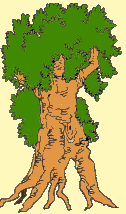Lexique des termes botaniques
achene: fruit, often winged, whose envelope does not open when ripe.
alkaloids: nitrogenous organic substances of plant origin.
alternate: the leaves of which are inserted on the stem at different levels.
anthocyanosides: pigments contained in flowers, fruits, and leaves, red or blue in color.
anthracene (heterosides): plant substances composed of one or more sugars and a genuine derived from the anthracene nucleus.
berry: fleshy fruit containing small seeds or pips.
bract: small leaf located at the base of the flower or on its stem.
calyx: lower part of the flower made up of sepals.
flower head: compact agglomeration of flowers on the same container.
carotenoids: yellow or orange-red pigments whose name
comes from carotene, the first term in this series isolated from carrot.
carpel: compartment of the female organ forming the pistil of the flower.
decoction, decocté: an operation that consists of boiling a plant in water for a certain time to give a decocté.
denticulate: very finely toothed or serrated.
dioecious: plant where the male and female feet are distinct.
drupe: fleshy fruit with hardcore that contains the almond.
enzyme: organic catalyst of protein nature, produced by
living organisms, but capable of functioning outside the cell.
flavonoids: yellow pigments composed of a sugar and a genin derived from the chromone.
glonlerule: the compact union of flowers.
carbohydrates: compounds representing the most important group of
plastic and energetic elements of plants. There are sugars.
glycerides: main constituents of vegetable oils
containing glycerol esterified with fatty acids.
pod: dehiscent dry fruit opening with two longitudinal slits.
heterosides: substances resulting from the condensation of sugars and an unsweetened part called genin.
essential oil: a complex mixture of fragrant substances
volatiles contained in plants.
imp. arip.e nnée: leaf divided into several leaflets and odd number.
infusion infused: an operation that consists of putting boiling water on the plants to obtain an infusion.
lanceolate: elongated in shape ending in a spear.
lipids: a constituent of vegetable oils formed from esters of alcohol and fatty acids (see glycerides).
lobed: cut into several rounded parts (we can have trilobed or palmatilobed leaves).
macerated: operation which consists of leaving the plant in contact with water at ordinary temperature for a variable time.
mucilage: substances that have the property of swelling on contact with water.
paripinnate: leaf divided into an even number of leaflets.
pectin, pectic matter: substances present in the cell membranes of plants and necks posed by condensation of sugars and uronic acids.
peduncle: stem or main axis of a flower.
petiole: thinned part of the leaf joining the blade to the stem.
pubescent: covered with fine, short hairs.
protein, proteins: nitrogenous substances, of high weight
molecular sometimes, which by hydrolysis gives amino acids.
proteolytic: which hydrolyzes proteins.
raceme: raceme, speaking of flowers, rather loose and messy.
rhizome: perennial underground stem.
samara: dry fruit that does not open and has four membranous wings.
Saponoside: heterosides composed of sugar and sterols or triterpene genin.
sesquiterpene: compounds formed from three isoprene units and constituting certain essential oils.
sterols: organic compound usually formed from four rings
carbonaceous and genins of certain saponosides.
Gallic and catechin tannins: substances of astringent flavor with the property of tanning the skin and of combining with proteins.
triterpenes: organic compounds generally containing thirty carbons and forming the genin of certain saponosides.
whorled: grouped leaves starting from the same point.
Vitamins: organic substances sometimes not synthesized by the body which behaves as factors essential for normal metabolic functions.
tendrils: thread-like organ, often helical, allowing the stem to support itself and adhere to a surface.
Ajouter un commentaire






















